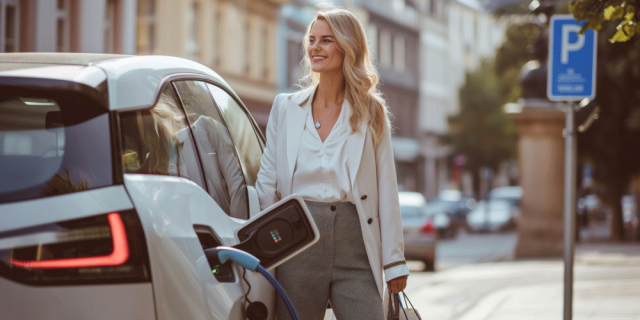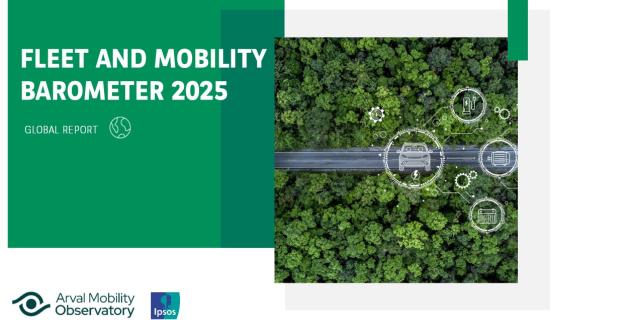23rd of January 2023
Electrification of vehicles brings many benefits to drivers. Besides the obvious sustainability and much lower energy costs, EVs also require less maintenance, and fewer replacement parts.
The critical, and most expensive element of an electric (or plug-in hybrid) vehicle is its battery. The lithium-ion batteries used in today’s EVs are generally extremely safe, reliable, and durable. But just like any other part of a van or car, they need to be maintained properly, and drivers can take steps to maximize the life of their EV’s battery.
Battery technology for EVs is quickly evolving. Various chemical compositions have different energy densities, charging profiles, and lifespans.
The majority of BEVs available in Europe have batteries composed of Nickel, Cobalt, and Manganese (NMC). This is a battery chemistry that has been tested and improved in cars and personal electronics since the 1980s. A few EVs also use Nickel Cobalt Aluminium (NCA) batteries, which provides a slightly longer life-span and uses only one-third the amount of Cobalt.
There is another battery composition that is quickly gaining popularity among automakers. Lithium Ferro Phosphate (LFP) batteries are less expensive, can be fully charged every time, and have a lifespan up to four times higher than other EV batteries. Also known as lithium Iron Phosphate batteries, these LFP batteries have a lower energy density, however, and need to be heavier to hold the same amount of energy.
Other battery compositions – such as Lithium Titanate, Lithium Manganese, or Sodium Ion – are still being fully developed for road-use. As is the so-called solid-state battery, which promises a much higher energy density and much faster charging time, due to extremely high voltage capabilities.
The capacity of a battery is measured in Kilowatt-Hours (kWh). If you know the capacity of your EVs battery, and the speed of the charging station you use, you can calculate the time required to charge your vehicle.
For example, a typical 50kWh battery can be charged in just over 5 hours at a 11 kW charger or in less than 20 minutes at an ultrafast charging station at 150 kW. Some fast-chargers can manage up to 350 kilowatt charge per hour, and can therefore charge a modern EV in less than the time it takes to order and drink a cup of coffee. Not many vehicles accept such fast charging speeds though.
Such fast charging is clearly a very convenient way to boost your range while on a longer trip. However, every charging procedure puts a little bit of stress on the battery. So to achieve the maximum life from an EV’s battery, drivers should try to fast charge their vehicles only when necessary.
Most drivers who charge their EVs either at home or at the workplace can get several days’ worth of driving out of one charge. Some can drive over 500 kilometers before needing a charge.
Just as you wouldn’t fill up your conventional car daily, it is not necessary, or advisable, to charge the vehicle every day or night.
In fact, charging EVs with a typical, NMC or NMA-based battery to 100% every time may actually degrade the battery life. Their operating sweet-spot is between 20% and 80% charge. Drivers should only charge these batteries to 100% before a long journey.
This isn’t the case for LFP-based batteries. These batteries are designed to be charged fully every time, even for daily use.
The speed of charging is not just dependent on the size of the battery and the kW capability of the charging point. It also depends on the maximum charging speed accepted by the car, and even the temperature of the battery.
Some EVs are only capable of accepting 50kW chargers, while others are even able to charge at up to 350kw. But even this depends on the state of charge and the temperature of the battery.
For example, while fast-charging, the maximum charging speed will decrease as the battery reaches full capacity, or if it gets very warm.
But drivers don’t usually need to remember how much, or how fast to charge. Most EVs have software that will automatically precondition the battery in order to reach optimum charge, limit the maximum charge, and adjust charging speed for the current conditions.
The displays in today’s EVs will also clearly show a driver the available range, based on current driving conditions.
The range of an EV and its battery is also dependent on the environment, and the way the vehicle is driven.
Extremely high or low temperatures may have an impact on the battery’s performance. When outside temperatures are very low, an EV can lose up to one-third of its range. This is primarily because of the extra energy used to heat the interior of the vehicle or its components.
Similarly, very high temperatures that require significant amounts of battery or passenger cooling will also impact range.
Driving behavior also impacts EV range. Just as a fuel-conscious diesel or petrol driver will avoid hard acceleration or braking, an EV driver can also preserve range and battery life by driving in a measured way. Through regenerative braking, most EVs can reclaim kinetic energy into the battery when the driver is coasting or braking.
Some EVs are now even able to supply power back to the energy grid, in a process called “V2G” – or vehicle-to-grid charging. Although it might seem that this would put a strain on battery life recent research suggests the opposite is true.
Research by the Universities of Nottingham and Warwick shows that fleet vehicles connected to a smart charging grid not only had better battery health, but also saved the drivers money, by only charging at certain times.
If treated well, an EV battery will continue to hold well over 90% of their charge after 100,000 kilometers. In fact, modern EV batteries are designed for a lifespan of over 10 years and 2,000 cycles or more. With a range of over 400 kilometers, this would represent a lifespan of 800,000 kilometers before needing to be replaced.
This is why most manufacturers are comfortable in issuing battery warranties of five to ten years - often exceeding even the vehicle’s own warranty. The current industry norm being 8 years, or 160,000 km.
There continue to be many advancements in battery technology, which means that battery range and lifespan continue to increase.










